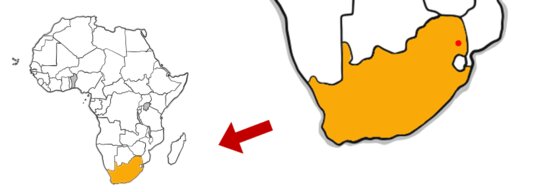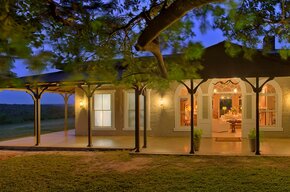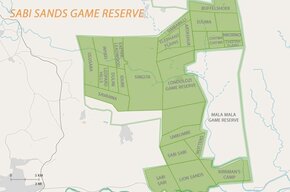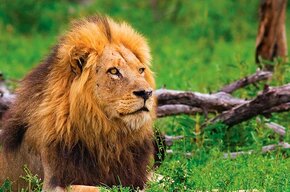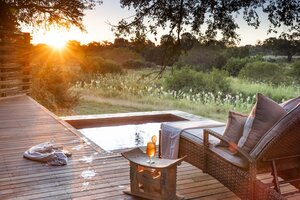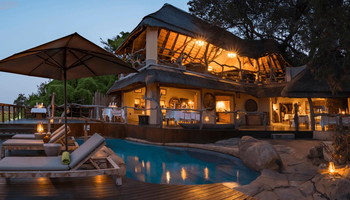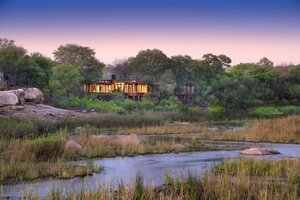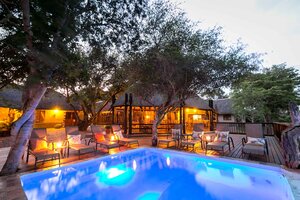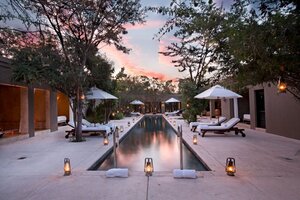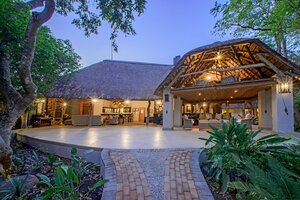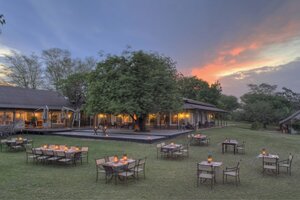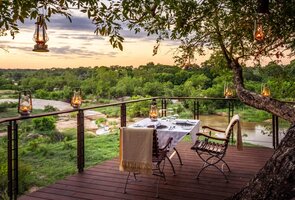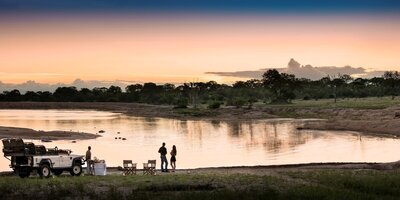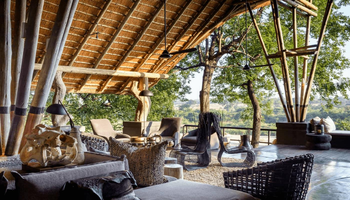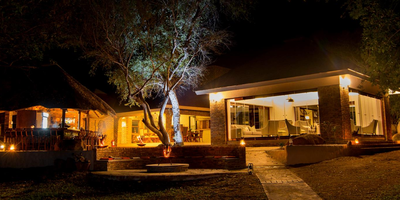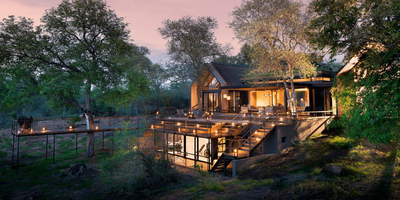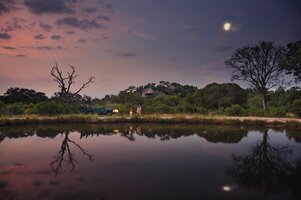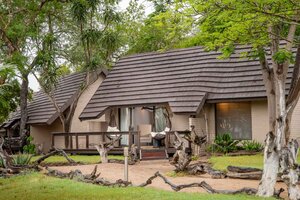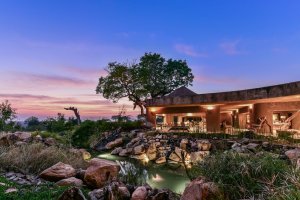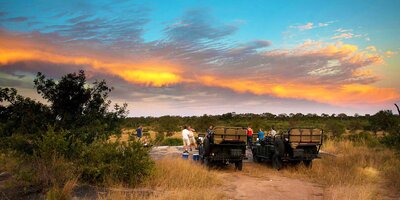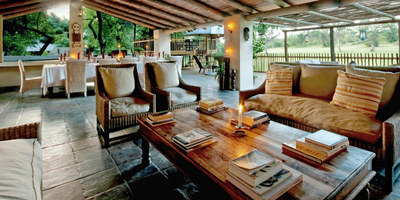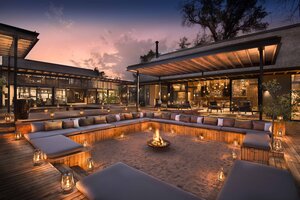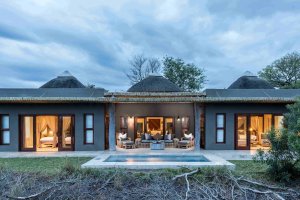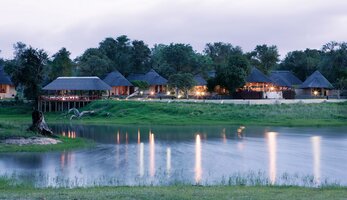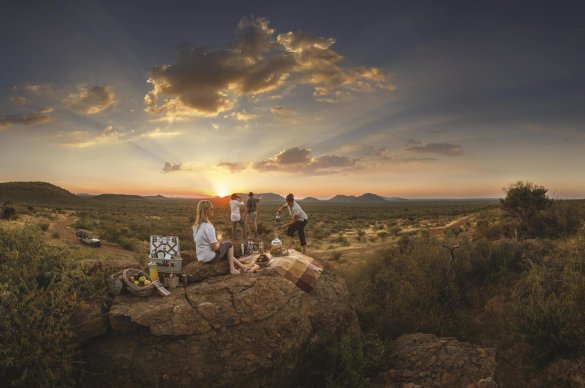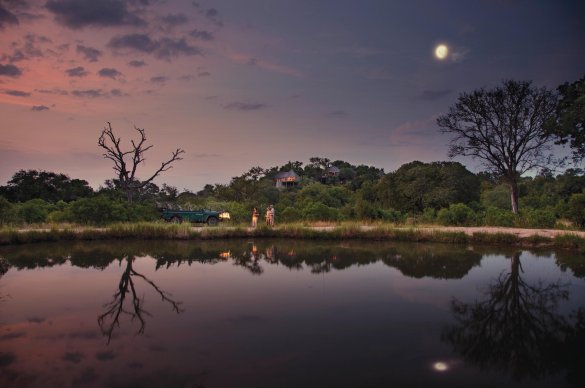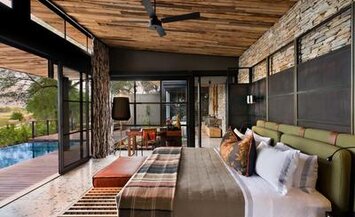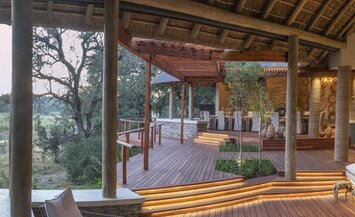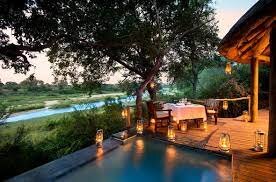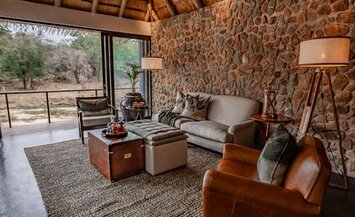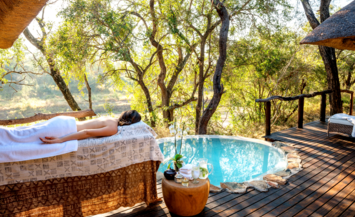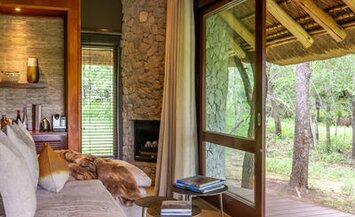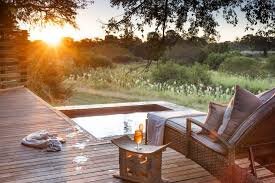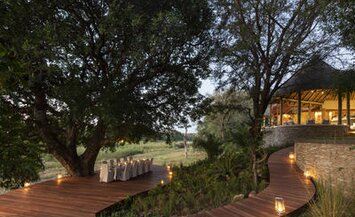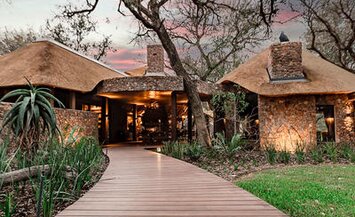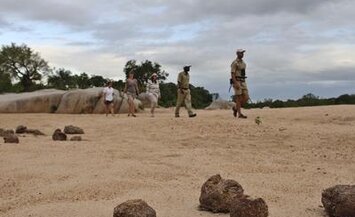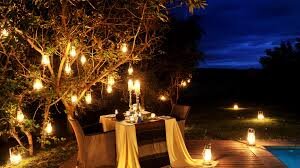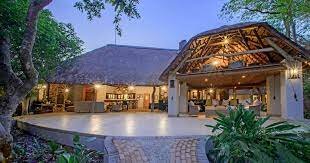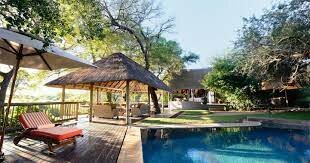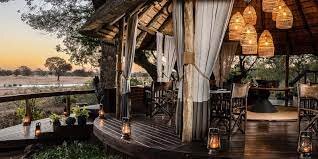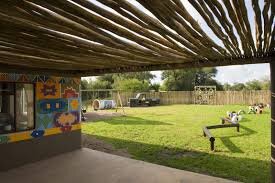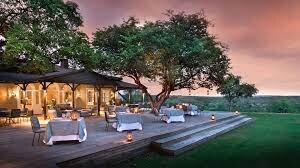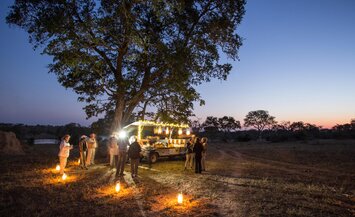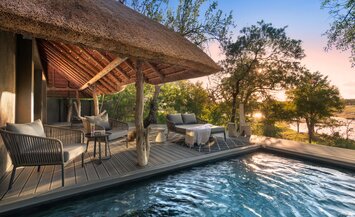Overview
The Sabi Sand Private Game Reserve shares a 50km unfenced border with Kruger National Park and offers the best wildlife viewing in South Africa. The area is divided into individual private game reserves, all offering the ultimate Big Five experience. The reserves offer an exclusive experience with luxury accommodation, great service and excellent food.Why Go:
- Superb wildlife viewing
- Home to the Big Five
- Day and night game drives
- Exceptional service and hospitality
- Excellent high-end luxury safari lodges
- Off-road driving allows close-up viewing of animals
Wildlife
Sabi Sand is the place in South Africa to easily see all of the Big Five in a short period. Even a two-day visit is usually enough to see all flagship species.With a good population of highly habituated leopards, Sabi Sands is one of the best places in Africa to see these normally elusive cats. Lion and cheetah are also easily seen.
More About the WildlifeScenery
Sabi Sand is an extension of Kruger National Park and has the same relatively thick vegetation consisting of woodland savanna. Two rivers run through the park, providing water. The riverine vegetation makes an excellent habitat for leopards and other wildlife.
Best Time to Visit
The best wildlife viewing time is during winter, which is also considered the ‘low season’. Fewer crowds make this an appealing time for a visit. It is also the Dry season which lasts from May to September.Animals are easy to spot during the dry months as foliage becomes less abundant and they gather around rivers and waterholes. September is the most attractive month to visit. It is also the least cold of the winter months.
More About the Best Time to VisitWeather & Climate
Sabi Sand experiences winter and summer at opposite times to Europe and North America. October to April are the hot, wet summer months while the warm and arid winter occurs from May to September.Although winter days are dry and mild, it is cold in the mornings, so warm clothes are advised for morning and evening game drives. Expect thunderstorms in the afternoon during the Wet season, though it generally doesn’t rain all day.
More About the Weather and ClimateWildlife & Animals
At Sabi Sand Game Reserve you will easily be able to see all of the Big Five in a short period. Even a two-day visit is usually enough to see all flagship species. With a good population of highly habituated leopards, Sabi Sand is one of the best places in Africa to see these normally elusive cats. Lion and cheetah are also easily seen.
Elephant
Common
Zebra
Common
Hippo
Common
Buffalo
Common
Zebra
Common
Wildebeest
Common
White Rhino
Occasional
Black Rhino
Rare
Lion
Common
Leopard
Common
Cheetah
Common
Hyena
Common
Wild Dog
Rare
Wildlife highlights
Sabi Sand Game Reserve is possibly the best place in Africa to see leopards. Both the quantity and quality of sightings is superb. This is a place where you can see leopard behavior such as males marking and patrolling their territory or females interacting with their cubs. Wild dog sightings are less common, but if they are denning in the area, it is often possible to spend time with these amazing predators.Best time for wildlife viewing
Wildlife viewing in Sabi Sands is at its best during the Dry season (June to September). August and September are particularly nice, since it is warmer than in mid-winter and animals tend to gather at water sources, making them easier to spot.Best Time to Visit
- Best Time to GoMay to September
(Dry season) - High SeasonOctober to March
(The park gets crowded)
May - September
Dry Season
October - March
It can get a bit busy
April - September
Excellent time for wildlife viewing
April - May
Mild weather and little rain
September - October
Mild weather and little rain
June - August
Chilly mornings and nights
December - February
Hot and humid
May - September
- Dry Season – Winter- It is low season for tourism
October - March
- Wet Season – Summer- Very little risk of malaria
Weather & Climate
The Sabi Sand experiences winter and summer at opposite times to Europe and North America. October to April is the hot, wet summer months while the warm and arid winter occurs from May to September. Although winter days are dry and mild, it is cold in the mornings, so warm clothes are advised for morning and evening game drives. Expect thunderstorms in the afternoon during the Wet season, though it generally doesn’t rain all day.Climate Chart
- 272-479m / 892-1,572ft© chart & park data: SafariBookings. © climate grid data: WorldClim project. All rights reserved.
Dry Season
- May to September – WinterThe dry winter season is from May to September, which is also the best time to visit Sabi Sand Game Reserve.
Wet Season
- October to April – SummerThe dry winter season is from May to September, which is also the best time to visit Sabi Sand Game Reserve.
Getting There
Sabi Sand Game Reserve is a sum of smaller parts with various freehold landowners. There are a number of ways to access particular lodges within the reserve by road and air. In addition to the options below, private road transfers, charter hops and individual charter flights can be arranged to suit guest itineraries.Airline and Ticket Prices
People flying from international destinations can choose from one of the many flights to the region throughout the year.
Domestic Flights
There are domestic flights to the Sabi Sands regions and people can also choose self-drive options.
Getting to the Sabi Sands Game Reserve by road
Travellers making use of their own rental car when travelling in South Africa can easily reach the Sabi Sand Game Reserve.
From Johannesburg, the driving distance is approximately 450 kilometres. Most of the route from Johannesburg takes you along the N4 national road making it an easy and comfortable drive.
Including some stops for refreshments, the total driving time adds up to about 6 hours. Please note: access to the northern section of the Sabi Sands (access to for instance Chitwa Chitwa, Cheetah Plains and Arathusa lodges, also see our Sabi Sands map) is through Gowrie gate which takes 7 hours to get to from Johannesburg.

